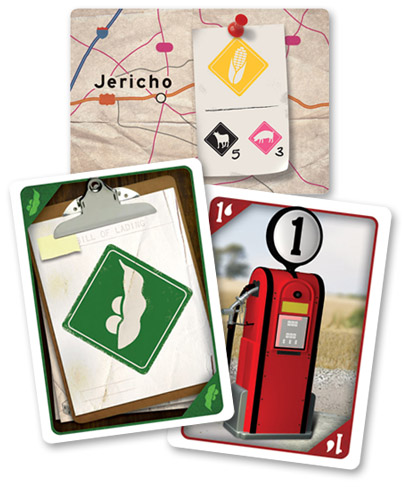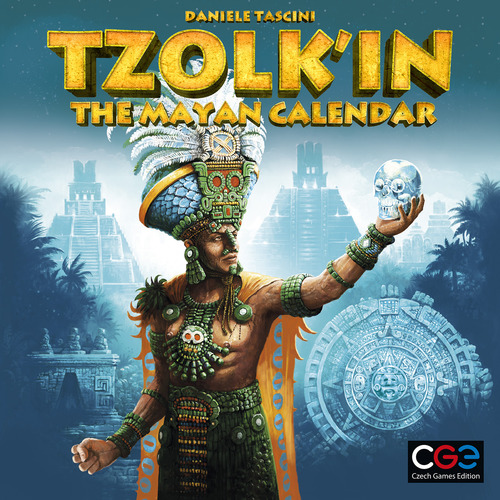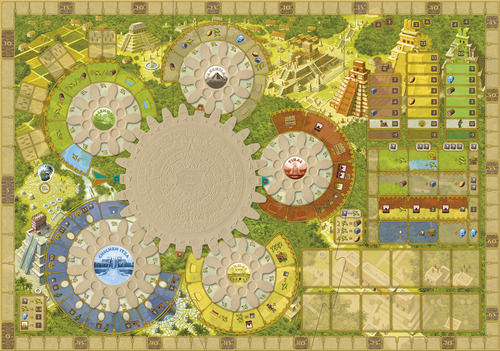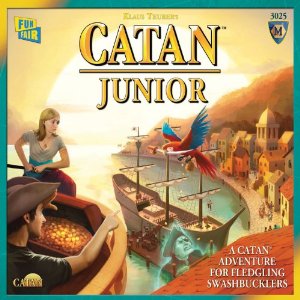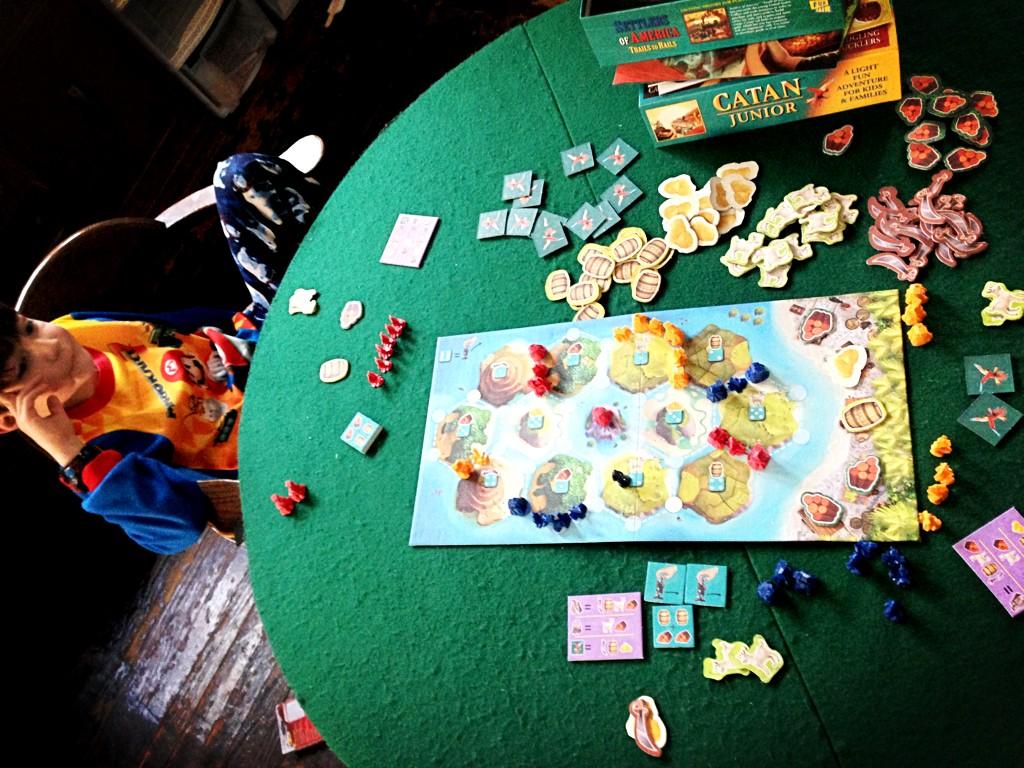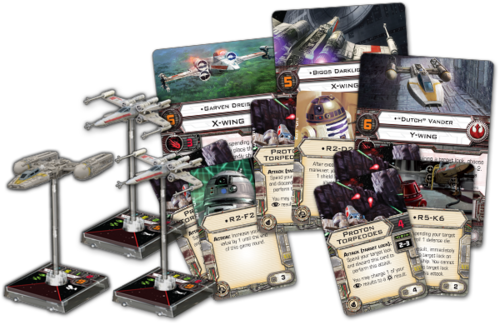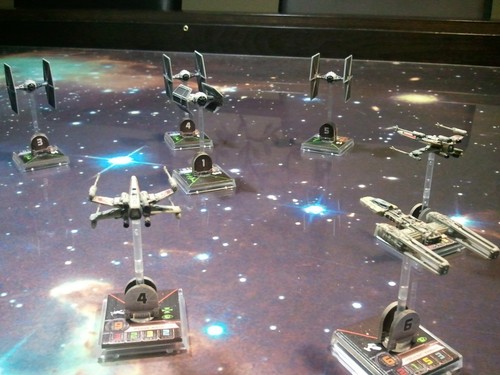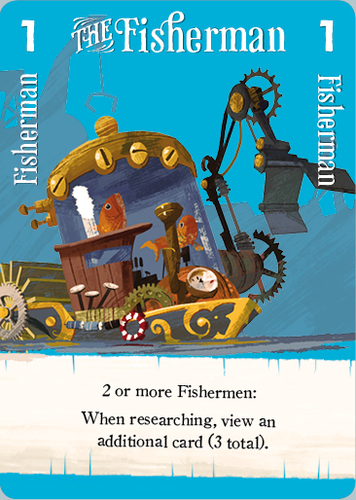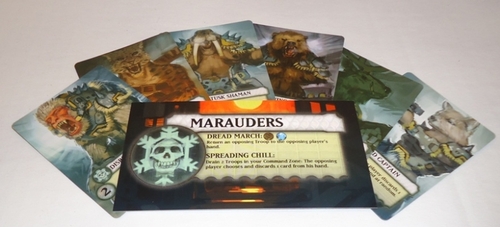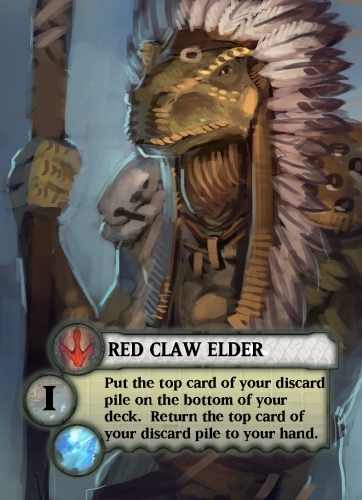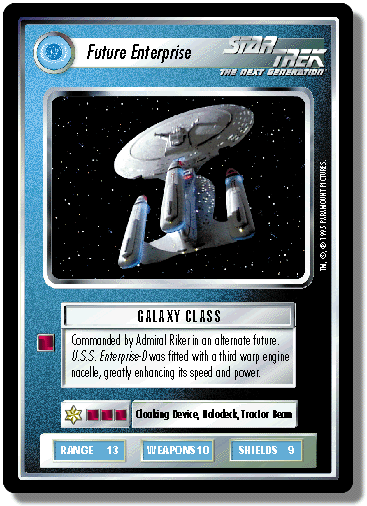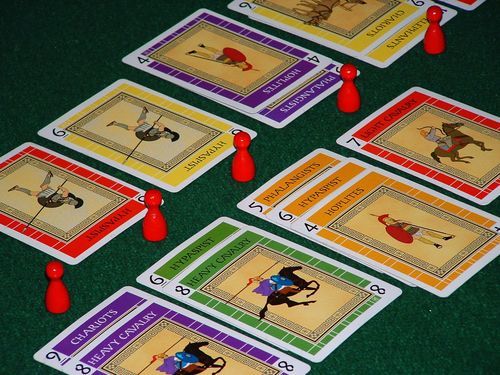The Great Heartland Hauling Co.—A Double-Take Review
/ "Breaker, breaker one-nine, you got a county mounty comin' up on your back door. You might want to back off the hammer."
"No can do. I've gotta get these
"Breaker, breaker one-nine, you got a county mounty comin' up on your back door. You might want to back off the hammer."
"No can do. I've gotta get these pink cubes pigs up to Jericho."
The Great Heartland Hauling Co. is a "cubes and cards game" for 2 to 4 players from Dice Hate Me games, and designer Jason Kotarski. You can read an interview we did with Jason right here.
- 46 Freight Bill cards (15 each of soy beans and corn, and 8 each of cattle and pig)
- 19 Fuel cards (10 Move 1, 6 Move 2, and 3 Move 3)
- 12 double-sided Location cards
- 1 Distribution Center card
- 8 Score/Cargo cards
- 4 wooden trucks in the player colors
- 60 wooden Cargo Crate cubes (15 of each of the four colors)
- 4 Reference/Variant cards
- [My Kickstarted copy also came with a Badlands Expansion, a Truck Stop "inspansion", and pieces for a 5th player. I have no idea if these come with all copies of the game or not.]
Gameplay
First you'll randomly set up the board, depending on the number of players. The Distribution Center card is always in the middle, and that's where the trucks start. Each Location card has a "native good," and you'll place five cubes of that good on each card. You'll shuffle the Fuel and Freight Bill cards together, deal five to each player, and the place the top three cards of the draw pile next to the draw pile a la Ticket To Ride.
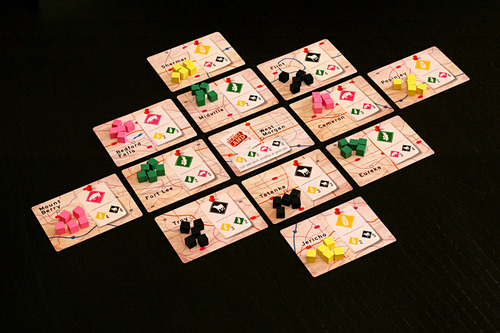 There are 3 Phases: Move / Take an action / and Refuel
There are 3 Phases: Move / Take an action / and Refuel
So you have to move every turn; you can do this in one of two ways. First, you can discard fuel cards and move the exact number on the cards. You can add more than one card together, but you can never move more than three spaces on a turn. The second way to move is to pay $1 for each space you move—again, up to three spaces. If you're out of Fuel cards and money, you move to the Distribution Center card, discard as many cards as you want, and then draw up to five cards again in the Refuel phase.
There are a few rules that govern moving:
- You can only use either Fuel cards or cash—not both.
- You can only move orthogonally.
- You can't backtrack to spaces you already passed in that turn.
- You can move through a space with another truck, but can never stop on a space with another truck.
- You can't stop on the Distribution Center—unless you're out of cards and dough, as I said before.
Phase 2 is where you take actions; you have to Load, Unload, or Discard. To Load, you discard Freight Bill cards and load the matching good onto your truck—which holds up to 8 goods of any combination. If the good is a native good for that card, you can load one good for each card you discard. If it's not a native good, it costs two Freight Bill cards for each good you load. If you choose to unload, you discard one Freight Bill card for each good, unload it on a card that has demand for that good, and get cash for each good. You can only Load or Unload one type of good on each turn.
FREQUENTLY FORGOTTEN RULE: A Location card can only hold eight goods cubes at any one time.
Finally, you can take the Discard action. You discard as many cards as you want, and then pay $1.
After you've taken an action comes the Refuel phase. You draw from the supply until you have five cards again—you can choose from the faceup cards, or take your chances with the facedown draw pile.
When a player reaches a certain money level ($30 in a 4-player game, $40 in a 3-player game, and $50 in a 2-player game), every other player gets one last turn and the game ends. If any players still have goods cubes in their truck, they lose money (-$1 for soy beans and corn, and -$2 for each cattle or pig). Most cash wins—with ties won by the player with the fewest cubes left in his or her trailer.
My copy came with some fun variants:
First, each of the Location cards is double-sided. The regular side has the location, a native good, and then two other goods the Location "demands." If you flip to the advanced side, the cards have some obstacles/ For instance, a Road Closed symbol means you can't move into or out of the location from that direction. The Toll Road forces players to pay $1 to move through it. And the Weigh Station forces players to pay $1 for each cargo cube above four in their trailers. These are interesting—though I think the Weigh Station is kinda harsh. It's already risky to stockpile goods, but to get charged for them seems rough.
The Badlands expansion is for a five-player game—you place the two cards on the furthest reaches of the board. There are no native goods on these, but they pay more for the goods they demand. We haven't played with this one yet, but it seems fairly straightforward.
Finally, there's the Truck Stop inspansion, which are special power cards you can purchase and use in the game. They include powers such as making one diagonal move per turn, paying $1 to not move on your turn (which is more useful than it sounds), and the ability to unload multiple goods types on one turn. They're interesting and fun; the only one that doesn't seem to fit is the Ham Radio, which lets you trade goods with a adjacent player. It doesn't really fit the rest of the game at all, and we'll likely never play with that particular card. (Also, I'd be fine if the word "inspansion" never catches on...)
Recommendations
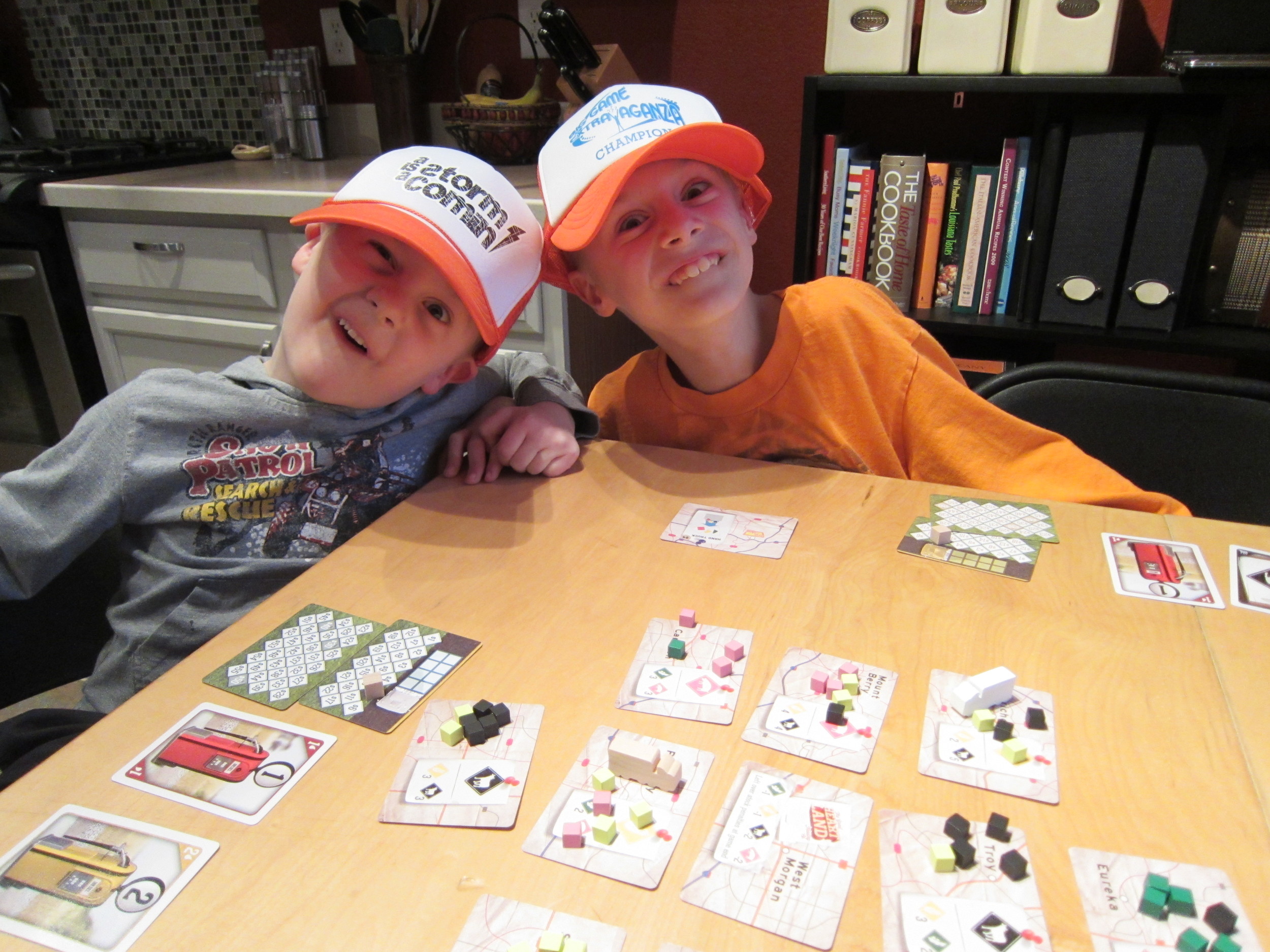 Youth Group Game? Under the Right Circumstances! It won't accommodate a crowd, but if you've only got a few, it's light enough to play with nongamer teens.
Youth Group Game? Under the Right Circumstances! It won't accommodate a crowd, but if you've only got a few, it's light enough to play with nongamer teens.
Family Game? Definitely! My 8-year-old played this a couple of times with open cards, but he'll soon be ready for playing the "real" game—cutthroat style!
Gamer’s Game? Yes! It's a meaty, longish filler—and I like those kind of games a lot. Groundbreaking? No. Fun? Yes!
The Verdict
Firestone—Dice Hate Me have packed a ton of game into this tiny package. There's a full game, and three variants/expansions in a perfectly sized box; I love that.
Jeremiah—Agreed...talk about bang for your buck! In an industry that is full of expansions, and re-releases, and add-ons, etc., it's awesome to get a great bunch of stuff packed in the box!
Firestone—My youngest (5) is too young for this right now, but he does love moving the trucks and drawing cards for us. My oldest really liked it; in fact, he said, "This game is so fun!" One thing the Truck Stop expansion is great for is evening out his game. I randomly gave him one of the powers cards to start with, and that seemed to settle any disparity in playing level. It won't be long before he won't need that, though.
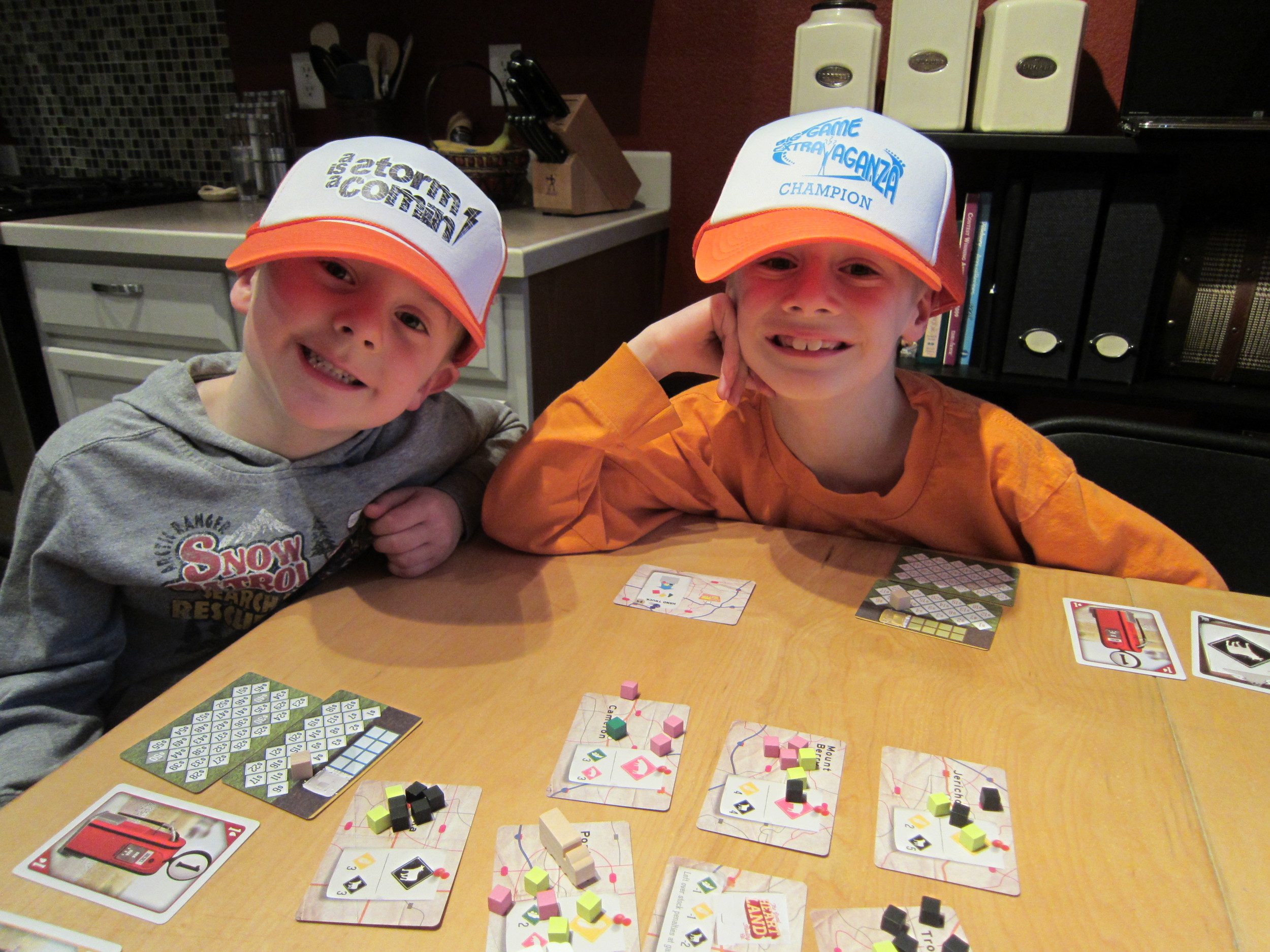 Jeremiah—I love playing games like this with my kids, because they also just blurt out their praise or disdain for the game. My youngest (4) is far too young to play so he often "helps daddy," but my oldest loves it. In the short time we've had the game it's made its way to the table several times with my boys already. And that's not counting the times I've played with my gamer friends.
Jeremiah—I love playing games like this with my kids, because they also just blurt out their praise or disdain for the game. My youngest (4) is far too young to play so he often "helps daddy," but my oldest loves it. In the short time we've had the game it's made its way to the table several times with my boys already. And that's not counting the times I've played with my gamer friends.
Jeremiah—The components are really of a high quality as well. I LOVE the truck meeples. My own personal pet peeve, is that they packed SO much into, I can't sleeve the cards and still fit them all into the box. Bummer.
Firestone—The truckles, truckeeples, big-rig-eeples, whatever are awesome. I agree about the sleeves. It seems like this will show wear fairly quickly—since the entire game is cards—but there's just not room in the box. :( Also, this could have used 100% more Pork Chop Express in it...
Firestone—The game group thought this was pretty good. Fillers are always welcome, and this is one of the better ones.
Jeremiah—Meaty fillers are even more welcome. There's something to be said for a game that moves quickly, and packs lots of gameplay, strategy, and decisions into a pretty compact amount of time.
Firestone—One thing I like is that this isn't another game about trading goods in the long-ago Mediterranean. Trucking is a rarely used and unique theme, and it fits perfectly.
Jeremiah—I believe the discussion we had was something to the effect of "I really like this game, but the theme isn't what I would have chosen. Maybe if we were pirates, or sailors, sailing to different ports to trade goods..." The theme works well for the game, but as a matter of taste it wasn't up my alley.
Firestone—Since the board changes every game, each game will be slightly different. And if you play with the Truck Stop, those are randomized and only a few used. So there's plenty of replayability.
Jeremiah—This speaks again to the value of picking up a copy of the game. Lots of variants. Here's a thought, too: Use some locations with the advanced side, and some with the normal side up. You've just doubled your variance in the board setup!
Firestone Final Thoughts—This game is just fun. I can play with gamers, family, and nongamers—and that's awfully rare these days. The box size, price-point, and amount of fun crammed in make this a great deal. I recommend it heartily!
Jeremiah Final Thoughts—Completely agree, it's super easy to learn for all skill levels, and tons of fun. The game moves really well, too; there are constantly decisions to make, but none that bog down the pace. The Great Heartland Hauling Co. gives enormous bang for your buck!
Thanks so much for reading!

